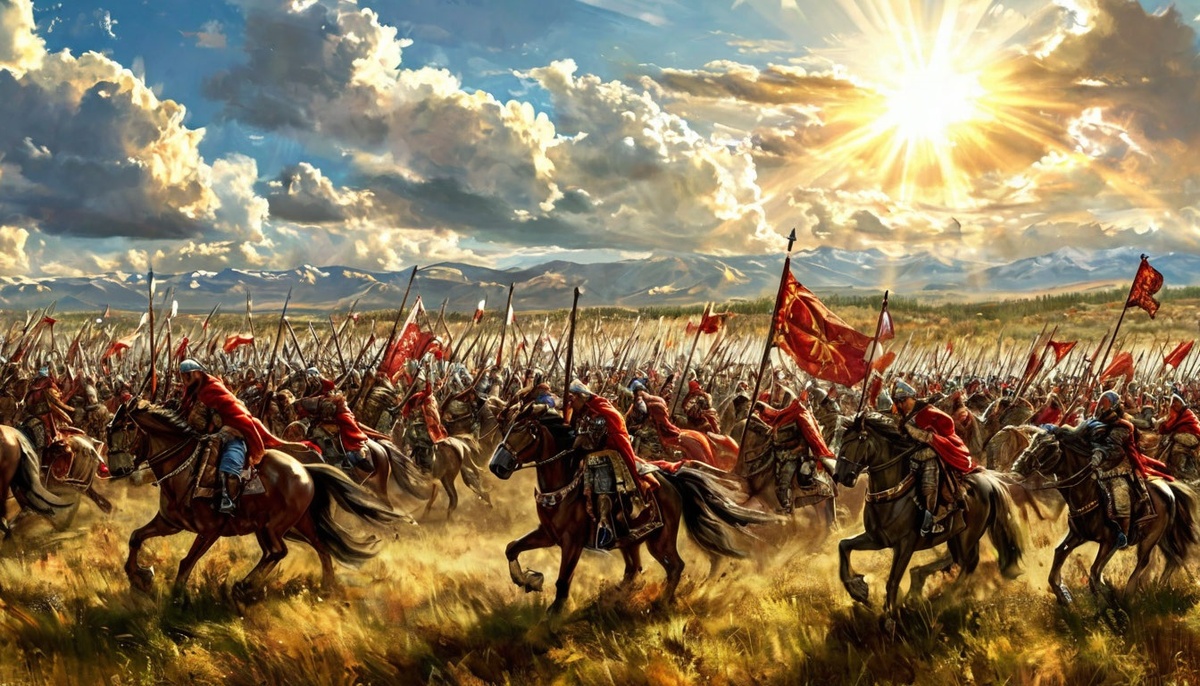Known to us burials of Mongol warriors during their conquest of Russia are very rare. Many on this basis assert, that there was no yoke, since there is no proofs of carrying out by the external enemy of the large military campaign.
It is necessary to believe, defenders of Zolotarevsky ancient settlement, Old Ryazan and other fortresses chopped themselves. And Russian princes have ordered to write in annals about feat of “invented” Eupatiy Kolovrat and two hundred years “for nothing” obeyed Tatar khans, paying them a considerable tribute.
So, I have no doubt: there was a yoke, but the question about the graves of fallen Tatar warriors should be considered separately.
The problem is that the Mongols and the Bales living under their rule changed their religion several times. And in connection with this their funeral rites changed: in times of paganism the customs were one, after the adoption of Islam or Buddhism — completely different. But it is no secret that we do not know where Genghis Khan himself found eternal rest, where his sons are buried, except, probably, Djuchi, and where, after all, are the graves of ordinary, even noble warriors who laid down their heads in the course of the conquest.
It is believed that the founder of the Mongol Empire was buried somewhere in his native steppe, and that a herd of horses was later driven through this place, or, alternatively, a river was diverted. But why do we not know about the tombs of his subjects?

The burial of a noble Mongol in the village of Olen-Kolodez, Voronezh region
There were at least two types of burials in shamanistic Mongolia. The first was open and reserved for strangers. The body was simply left in the middle of the steppe to be taken care of by animals and nature. Even now, Mongolians sometimes do this, which displeases local law enforcement officials.
But for noble people there was an opposite rite — their bodies were purposefully hidden. Let us give the floor to the envoy of the Roman Pope Plano Carpini, who visited Mongolia in the 1240s: “They go secretly into the field, remove there the grass with the root and make a big hole and from the side of this hole make a hole under the ground and put under the deceased that slave, who is considered his favorite… Then they bury the hole, which is in front of his hole, and put grass on top, as it was before, for the purpose that in the future it was impossible to find this place”.
Other European travelers repeat these words, sometimes mentioning additionally the very herd of horses required to conceal the secret. Some also say that the nomads got rid of slaves so that they would not tell anyone about the last resting place of the deceased. But no one explains why the Mongols did so in the High Middle Ages.
There are two versions on this subject, which complement each other. The first one is that they thus avoided plundering graves in order to steal the valuables hidden there. In addition to rich weapons, armor and horse harness, many other valuables, such as gold and silver, were left in the grave.

And in order to prevent strangers from disturbing the hero’s rest out of their greed, the burial place was concealed. It was reasonable in Mongolia itself with its eternal feuds, when respect for the dead of one tribe is not felt by neighboring tribes. It was also important in the conquered countries, where the Mongols dominated the representatives of completely different religions and cultures, who did not recognize their customs.
The second version is that for many pagan peoples death was considered only the beginning of the journey, and in the afterlife a lot of interesting things await us. That’s why they put in the grave everything that a man might need in the other world, including military equipment and money.
And contemporaries could well believe that by digging up the tomb, the deceased could be deprived of all this or even terminate his existence with the help of magic. So they tried to hide it with all possible safety. And, unlike other nomads, they did not make any mounds, the mere presence of which told everyone that there lies a great warrior.

Incidentally, in the same passage, Plano Carpini says how he and his entourage accidentally came to the cemetery where the Mongol warriors who had fallen during the campaign in Hungary were buried. The guards initially wanted to shoot them, but allowed them to leave without obstruction after recognizing that they were foreign diplomats.
